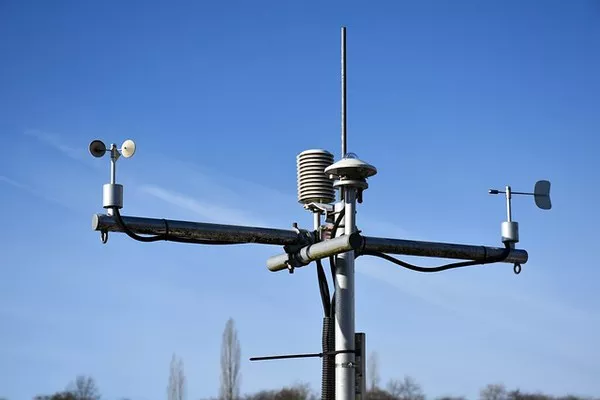Air conditioning systems play a crucial role in maintaining indoor comfort, especially in regions with extreme temperatures. To ensure that these systems operate efficiently, professionals often rely on various tools and instruments, among which the anemometer stands out. This article delves into what an anemometer is, its significance in air conditioning systems, how it works, the types available, and best practices for its use.
What is an Anemometer?
An anemometer is a scientific instrument used to measure wind speed and direction. It is an essential tool in meteorology and various industries, including HVAC (Heating, Ventilation, and Air Conditioning). In the context of air conditioning, an anemometer helps assess airflow performance, ensuring that air distribution is optimal and that the system operates efficiently.
The Importance of Airflow Measurement
In HVAC applications, measuring airflow is crucial for several reasons:
Energy Efficiency: Proper airflow ensures that the system does not overwork, leading to lower energy consumption and reduced utility bills.
Comfort: Accurate airflow measurement guarantees that conditioned air reaches all areas of a building evenly, providing consistent comfort for occupants.
System Longevity: By monitoring and adjusting airflow, HVAC professionals can prevent strain on the system, thereby extending its lifespan.
Indoor Air Quality: Adequate airflow is essential for maintaining good indoor air quality, as it helps dilute indoor pollutants and brings in fresh air.
How Anemometers Work
An anemometer measures airflow by detecting the speed of air moving through a given space. The principle of operation varies depending on the type of anemometer, but the most common methods include:
1. Mechanical Anemometers
Mechanical anemometers, often known as cup or vane anemometers, consist of rotating cups or blades that capture the wind or air movement. As the air flows past the device, it spins the cups or blades. The rotational speed is proportional to the wind speed, which can then be read on a calibrated scale.
2. Digital Anemometers
Digital anemometers offer enhanced accuracy and often display measurements in real-time. They typically use a small fan or sensor that detects airflow and converts it into an electronic signal, which is then processed and displayed digitally. These devices are convenient for HVAC applications due to their portability and ease of use.
3. Hot-Wire Anemometers
Hot-wire anemometers utilize a thin wire heated electrically. As air flows over the wire, it cools down, and the rate of cooling correlates with the airspeed. This method is particularly useful for measuring low air velocities and provides highly accurate readings, making it a favorite among HVAC technicians.
Types of Anemometers
Anemometers come in various types, each designed for specific applications. Below are some common types:
1. Cup Anemometer
This type features three or four cups attached to horizontal arms on a vertical shaft. It is mainly used for meteorological measurements and can be effective in measuring high wind speeds.
2. Vane Anemometer
Similar to cup anemometers but with blades, vane anemometers measure airflow direction and speed. They are often employed in HVAC applications to measure duct airflow.
3. Digital Anemometer
These are compact, battery-operated devices that provide digital readouts of airflow speed. They are user-friendly and ideal for quick assessments in HVAC systems.
4. Hot-Wire Anemometer
As mentioned earlier, this type is suitable for low airflow measurements and provides highly accurate readings. It is commonly used in laboratory settings and specialized HVAC applications.
5. Pitot Tube
While not a conventional anemometer, a Pitot tube measures fluid flow velocity by converting pressure into velocity. It is widely used in duct systems and wind tunnels.
Selecting the Right Anemometer for HVAC Applications
Choosing the right anemometer for your HVAC needs depends on several factors:
Application: Determine if you need to measure airflow in ducts, evaluate system performance, or monitor external conditions.
Air Velocity Range: Different anemometers have varying ranges of air velocity they can measure. Ensure the selected device can accommodate your specific requirements.
Accuracy: Depending on your application, you may need a device that offers high precision, such as hot-wire anemometers.
Portability: Consider whether you need a handheld device for quick measurements or a more extensive system for continuous monitoring.
Budget: Anemometers come at various price points. Establishing a budget can help narrow down options.
Best Practices for Using Anemometers
To ensure accurate and reliable measurements, follow these best practices when using an anemometer in HVAC applications:
1. Calibration
Regular calibration of the anemometer is crucial for maintaining accuracy. Follow the manufacturer’s recommendations for calibration frequency, especially if the device is used extensively.
2. Positioning
For accurate airflow measurements, position the anemometer correctly within the airflow path. Avoid placing it too close to walls or obstructions, as this can lead to inaccurate readings.
3. Consistent Measurement Points
When assessing airflow in ducts or rooms, maintain consistent measurement points to compare results over time. This helps identify trends and evaluate system performance effectively.
4. Understand Environmental Conditions
Environmental factors, such as temperature and humidity, can affect airflow measurements. Be aware of these conditions when interpreting your readings.
5. Follow Safety Protocols
When working with HVAC systems, always follow safety protocols. Ensure the anemometer is used in a safe manner, especially in high or hazardous locations.
See Also Is an Anemometer a Thermometer?
Conclusion
Anemometers are invaluable tools for HVAC professionals, enabling them to measure and assess airflow effectively. By understanding the different types, their operation, and best practices, technicians can ensure that air conditioning systems function efficiently and provide optimal comfort for occupants. As the demand for energy-efficient solutions continues to grow, the role of anemometers in the HVAC industry will only become more significant, contributing to improved indoor air quality and system longevity. Investing in the right anemometer not only enhances operational efficiency but also promotes sustainability and comfort in indoor environments.
You Might Be Interested In

